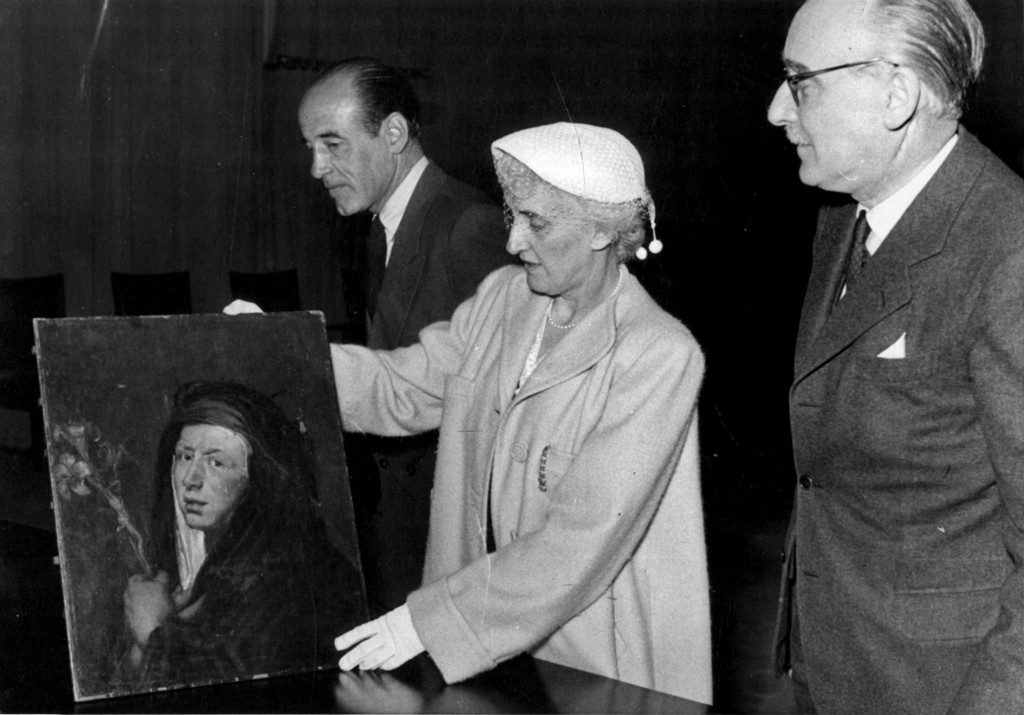On Wednesday, the New York Times published a necessary correction to the upcoming movie The Monuments Men, a goofy historical caper about a team of actual art scholars and curators whose Sisyphean task was to “protect what’s left and find what’s missing” of the millions of artworks and cultural treasures the Nazis plundered during World War II.
As envisioned by director George Clooney, the Monuments Men look like himself, Bob Balaban, Hugh Bonneville, Jean Dujardin, Matt Damon, John Goodman, and Bill Murray. Who’s missing? The Monuments Women, of course.
To be fair, Cate Blanchett plays real-life art hunter Rose Valland, but her role in the film is tiny, in stark contrast to her real-life counterpart’s stature.
The Times observes of Valland,
Mr. Edsel said, “There were many times when she could easily have been shot.” She risked her life daily, spying on Nazi officers as they emptied the Jeu de Paume on behalf of Goering and Hitler. Posing as an unassuming assistant who spoke no German, she listened in on their chatter, passed information to the Resistance and kept a ledger of the thefts that was vital to their recovery.
Including Valland, writer Tom Mashberg profiles four Monument Women for his piece. He writes that female post-war art hunters comprised “a few dozen” among the “more than 300” people tasked with this work — certainly not the majority, but still a significant percentage (10–20%) of the taskforce.
In Clooney’s “male-washed” retelling of history, though, women are worth barely a mention. Blanchett is a token presence, and because she’s the sole woman in this army of art lovers, she comes to represent the “Exceptional Woman” who is different from the rest of womankind — the woman who’s better than other women because she’s like a man.
The Monument Women didn’t just pop in for an occasional appearance, nor was there just one. The Times also writes of Ardelia Ripley Hall (pictured above) as follows:
Ms. [Edith] Standen, the Women’s Army Corps captain, described Ms. Hall in an article in the 1960s as “the dominant force” in the return of the art long after the mission became an unglamorous sidelight. In her career, Ms. Standen wrote, Ms. Hall alone oversaw the return of 1,300 items, including a Monet that went back to the Rothschild family in Paris.
It’s not surprising that Clooney, a powerful industry player who’s prone to juvenile pranks and likes to star in movies with all of his best buds, would create such a testesterone-choked film. But he does contribute to the ongoing erasure of women from the screen — “the fictitious villages and jungles and kingdoms and interplanetary civilizations [in the movies] nearly bereft of female population” that Geena Davis recently described as Hollywood’s norm. Except this time, Clooney’s blotting out real women from our shared history.
Art hunting was primarily a male endeavor, and The Monuments Men, as a not particularly well-received February release, has a good chance of disappearing quickly and quietly. But if Clooney wants to make a tribute to the brave art lovers who risked their lives for the sake of a culturally richer future, why should his adoration be conditional upon those heroes’ and heroines’ gender?






